Stereo-Microscopic Dissection
In Follicular Unit Transplants
In Follicular Unit Transplants
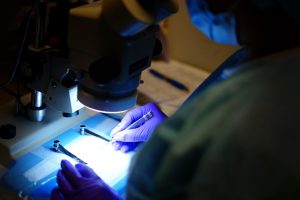
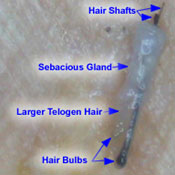
The basics of Follicular Unit Anatomy.
Probably no aspect of Follicular Unit Transplantation has generated more controversy than the necessity of using microscopes.
Stereo-microscopic dissection was introduced into the field of hair transplantation by Dr. Bobby Limmer who recognized the logic of using this tool as early as 1987. The New Hair Institute, pioneered the Follicular Unit graft for use in hair transplantation and was the first group to publish the technique in a peer reviewed medical journal. Microscopic dissection increases the surgeon’s cost and requires more highly skilled technicians.
The following three statements summarize the use of stereo-microscopic dissection:
The dissecting microscope allows the strip to be divided into sections (or “slivers”) by actually going around follicular units leaving them intact. The dissecting stereo-microscope is able to accomplish this because of its high resolution (usually 5x more powerful than magnifying loops) and its intense halogen top-lighting that provides continuous illumination as one dissects through the strip. Stability can easily be achieved by applying slight traction to the free end of the strip. The thin slivers are then laid on their sides and the microscopic dissection of the individual units is completed.
With stereo-microscopic dissection, except for the outer edges of the strip, every aspect of the procedure is performed under direct visualization, so that follicular transection can be minimized and the follicular units maintained. You are welcome to observe our NHI team performing microscopic dissection by visiting our offices. Please click on Open House for more information.
In a bilaterally controlled study performed at the New Hair Institute, the dissecting microscope was compared to magnifying loops with transillumination, for the preparation of follicular unit grafts after the strip was divided into thin sections (click on Dissecting Microscope versus Magnifying Loupes for original article). The results showed that microscopic dissection produced a 17% greater yield of hair as compared to magnifying loops with transillumination. This study showed an increase in both the yield of follicular unit grafts, as well as the total amount of hair. What is important to note is that this increase was observed when only the latter part of the dissecting procedure was studied i.e. after the strip has already been cut into sections. When complete microscopic dissection is used, the difference in yield is even more significant, and is probably on the order of an additional 5% to 10%.
This means that single strip harvesting combined with stereo-microscopic dissection will produce around 25% more intact hair follicles in each procedure. Then why won’t doctors use them? The reason is that it is more time consuming, requiues special skill and training, requires a larger staff than doctors generally have in their offices, and is more costly for the doctors to perform. But if it were the doctor’s own head, there is no doubt what method would be choosen. It is a shame they don’t treat their patients the same way. Please read Microscopophobia for a humorous satire on this subject.
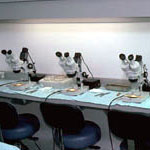
Dissecting microscopes in each NHI operating room.
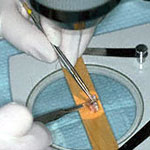
Stereo-microscopic dissection of a sliver into smaller pieces.
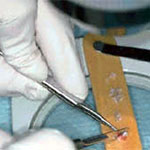
Stereo-microscopic dissection of a small piece into individual follicular units.
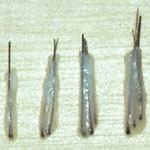
Perfectly dissected 1-, 2-, 3-, and 4-hair follicular units.
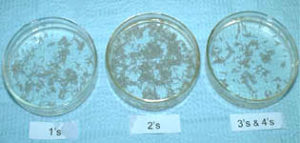
Hundreds of 1-, 2-, 3-, 4- hair follicular units in chilled Ringer’s Lactate holding solution.